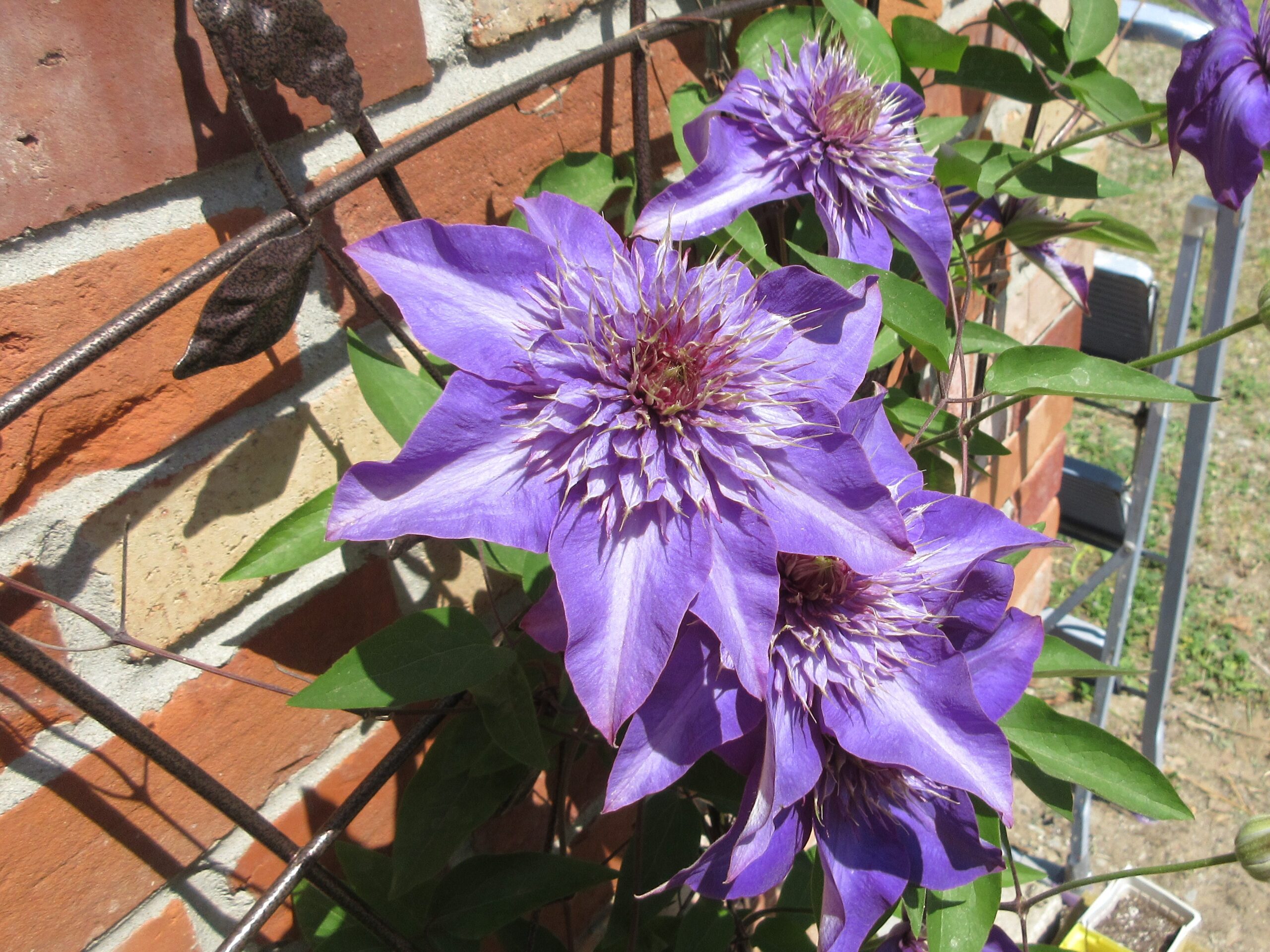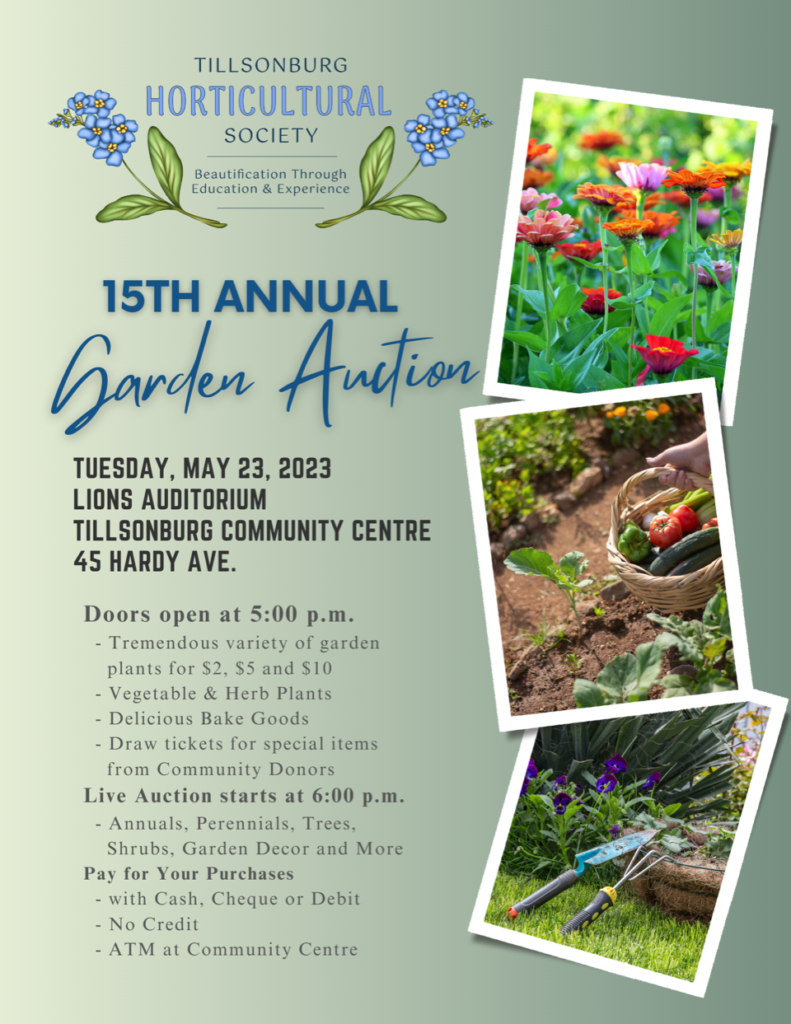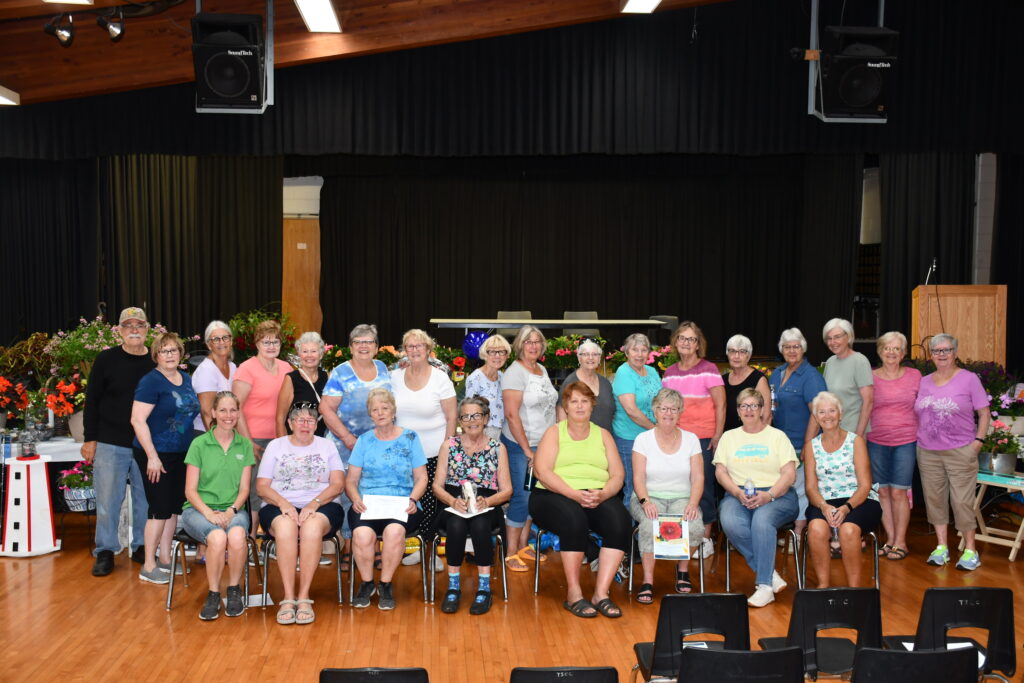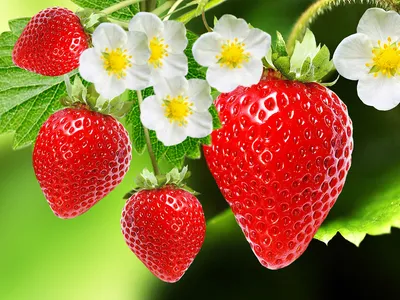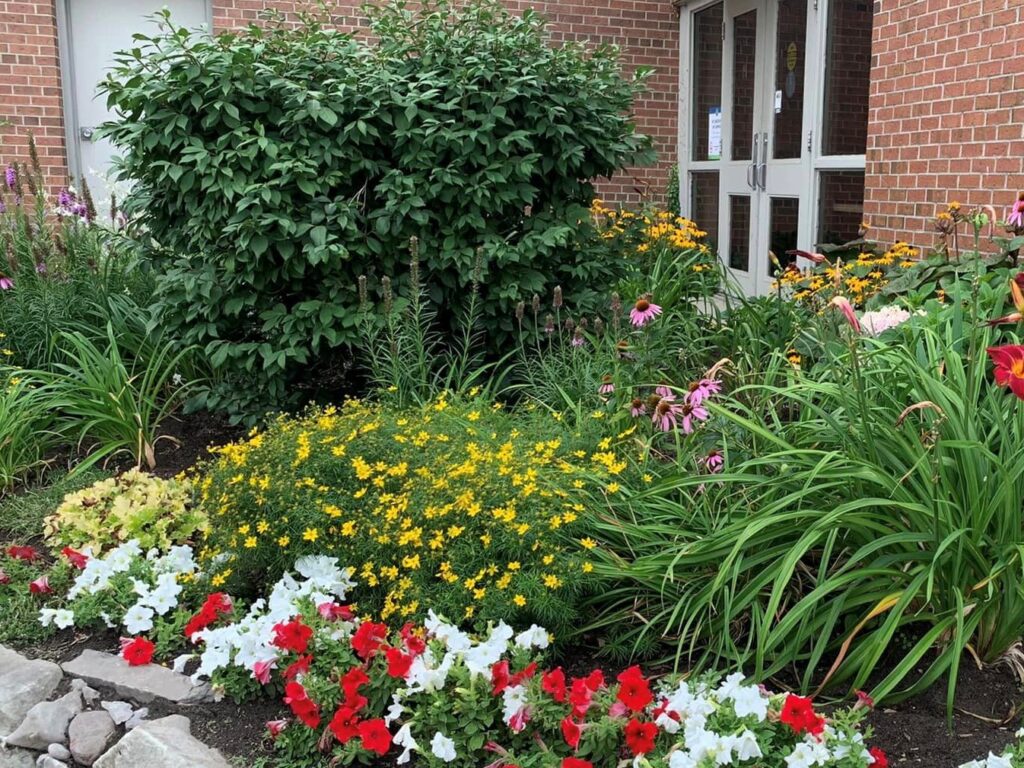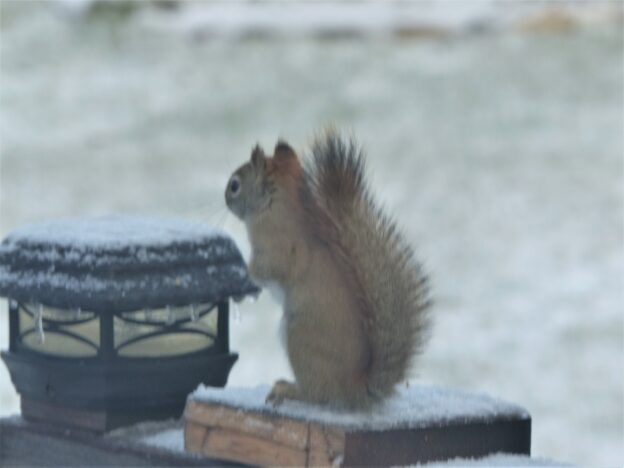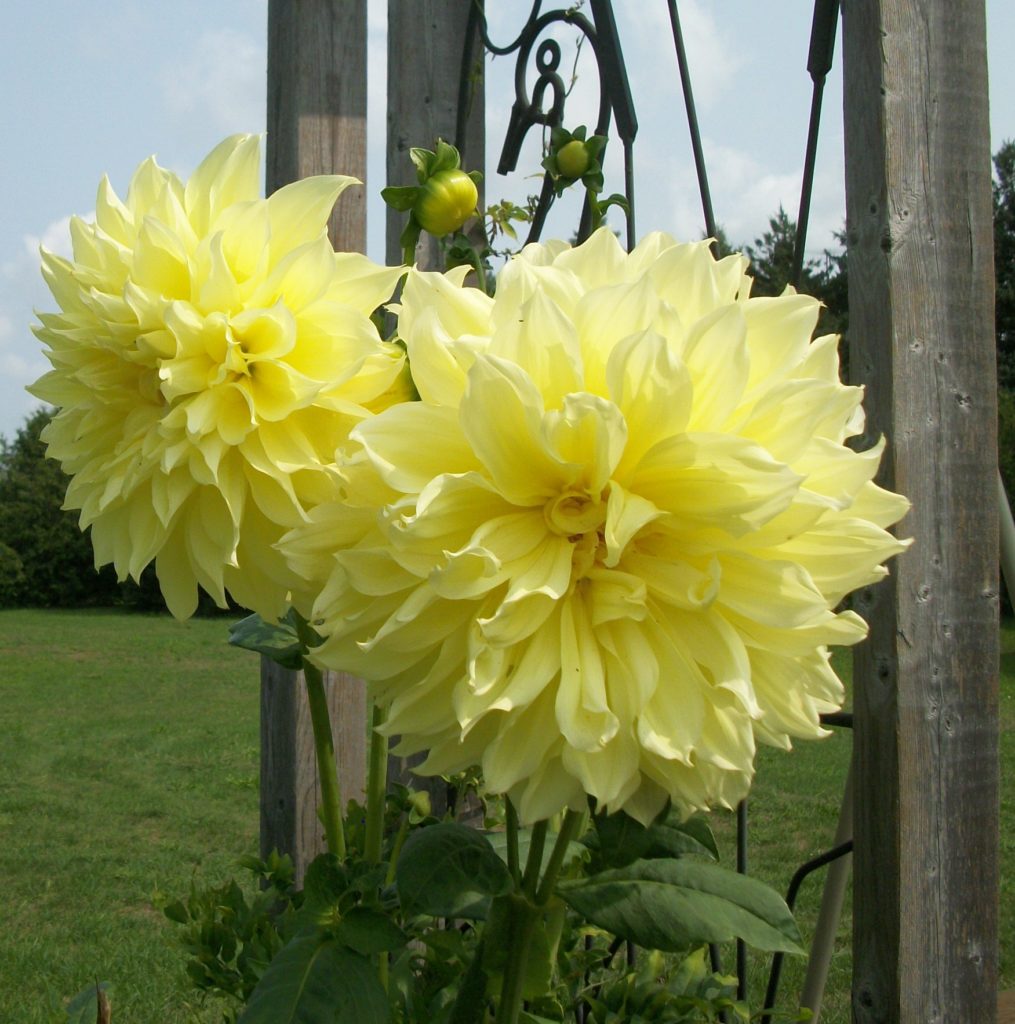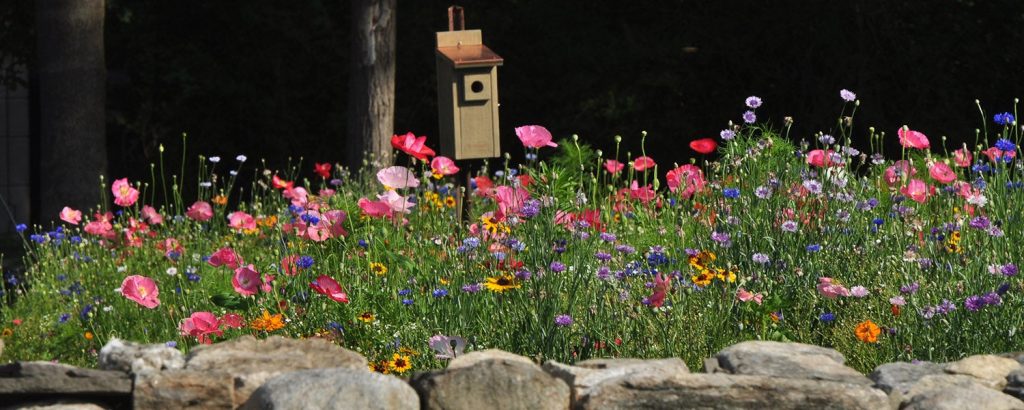Climbers for every garden
In every garden you will find climbers and vines, both annual and perennial. Climbers are commonly used to cover a fence or to transform a structure in the garden. Vines can be used in the same way but can be a ground cover although not thought of in that way by most of us. Climbers add a vertical dimension to any garden as a tower or a fence/wall of color and texture with its foliage.
It is said that climbers and vines are the same but there is a difference. Climbers are plants that have a strong root and need support and tying as they grow. Although they grow slowly, over the years they will produce a full cover of blooms throughout the season. The only care they need is to prune out the dead wood in the Spring and remove any suckers growing at soil level. Many climbers are perennial. Vines are more often annual. Vines are different in that they grow quickly and the stems are generally
very thin.
When considering a new plant, a climber will need a large space over time. Allow for its growth and the other plants around it. Climbing roses will grow up to 10 feet tall and at least 3 ft wide. Prune in Spring to allow air flow and prevent mildew. Clematis can be seen in most gardens. There have been many cultivars over the years. They can be
purple, lilac, pink and even white with single or double flowers. One is an evergreen. To grow them successfully it is said ‘heads in the sun’ and ‘feet in the shade’, It likes its roots covered in mulch or surrounded by a ground cover to keep them cool.
Wisteria will cover an arch and keep trailing everywhere without strict control and regular pruning. It is slow to flower, taking up to 5 years to become established. Then it will flower profusely when heavily pruned annually.
Virginia Creeper (Trumpet Vine) is a haven for hummingbirds with its open bright red trumpet flowers. It will become invasive over time even to the point of sending roots underground in grass.
Boston ivy if grown against a brick wall will send roots into any crevice and loosen the wall over time.
All of these are perennial so beware of their traits.
Annual climbers are most often called vines as the roots are shorter and they grow rapidly with fine thin stems. They still need a structure to grow on so that the tendrils can twine around for support. Flowers are varied, plentiful and bright. They will drop many seeds at the end of the year and often it may appear they are perennial. If you do not plan to grow the same seeds next year pick them up in the Fall. Morning glory is a common one and prolific, but the seeds are quite large and easy to pick up. Maybe
share next year with a friend. Another vine called Mexican flag has dark green heart shaped leaves and pendular flowers that start as yellow and progress to red. It creates a striking accent to a wall or fence. Sweet pea is also a vine but a short one with many delicate flowers with a strong fragrance, a nice addition to a deck fence.
Some vegetables are considered vines and can be grown for color, try scarlet runner bean. Cucumbers grown up a wire panel have large yellow flowers followed by the cucumber which can show the progress of the season to children. Make sure they have strong support. A teepee of canes is another way for support.
Do you have climbers and vines in your garden? They add another dimension to the landscape and always give a wonderful show of color all Summer. Climbers are a great way to show future young gardeners how to grow plants vertically and for gardeners to enjoy their own garden space, large or small. Happy Summer!!!!
The Tillsonburg Horticultural Society has a special event on June 24 th A Tour of Gardens – Garden Artistry 2023 with gardens each with a local artist. A bonus is a ballot for Peoples Choice on a quilted flag found at each garden. Tickets are $15 which can be purchased at Tillsonburg Garden Gate, Station Arts Centre and Annandale NHS.
Monthly meetings will resume on Tuesday September 5 th @ 7.30pm in the Senior Centre Tillsonburg Community Centre. Ken Brown, horticultural consultant and judge with tips and advice on gardening.
Everyone welcome, visit as a guest$4 or become a member for $20 annually, come join us. Check out www.tillsonburghorticultural.ca and Facebook-tillsonburghorticultural.
